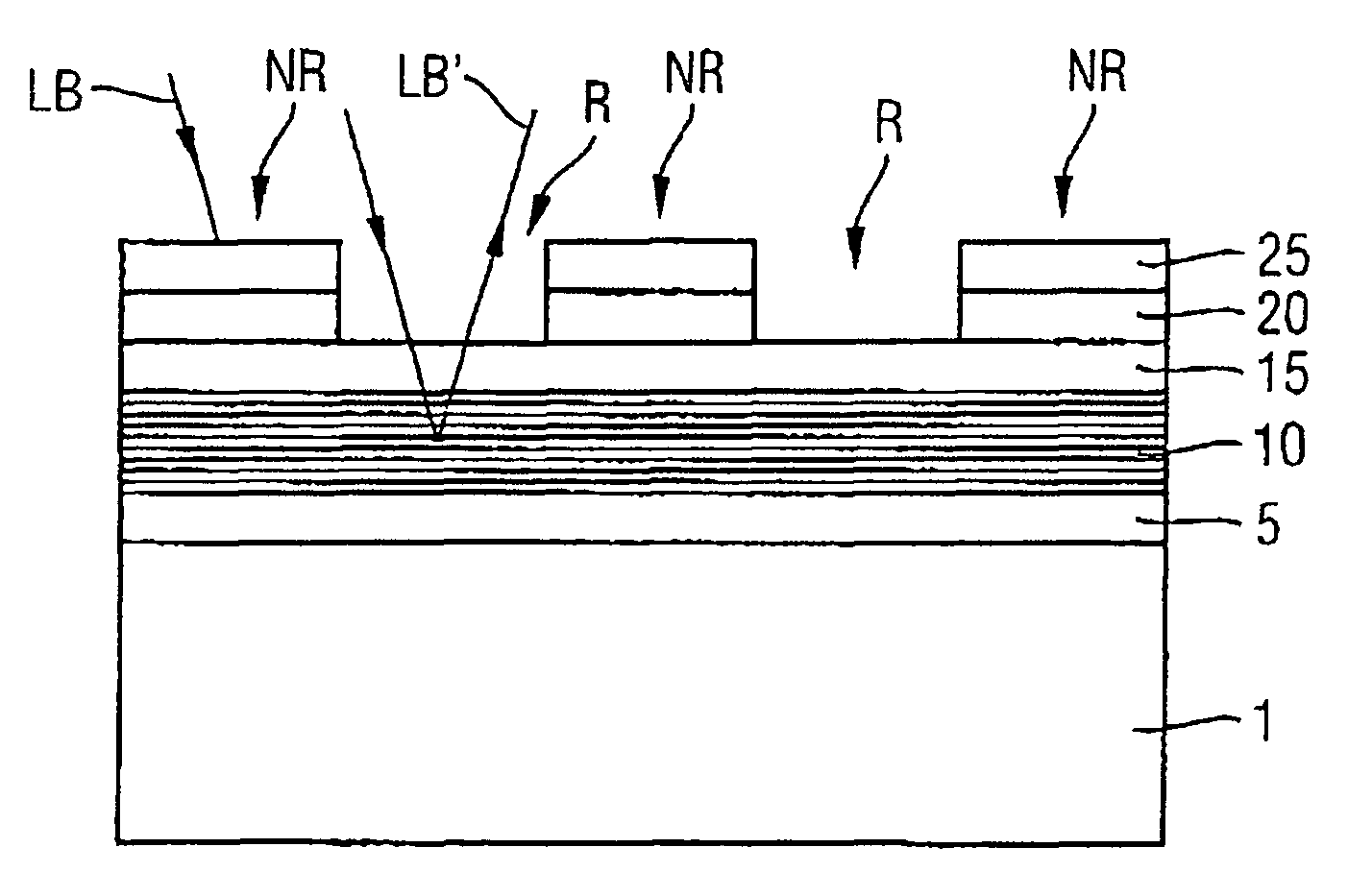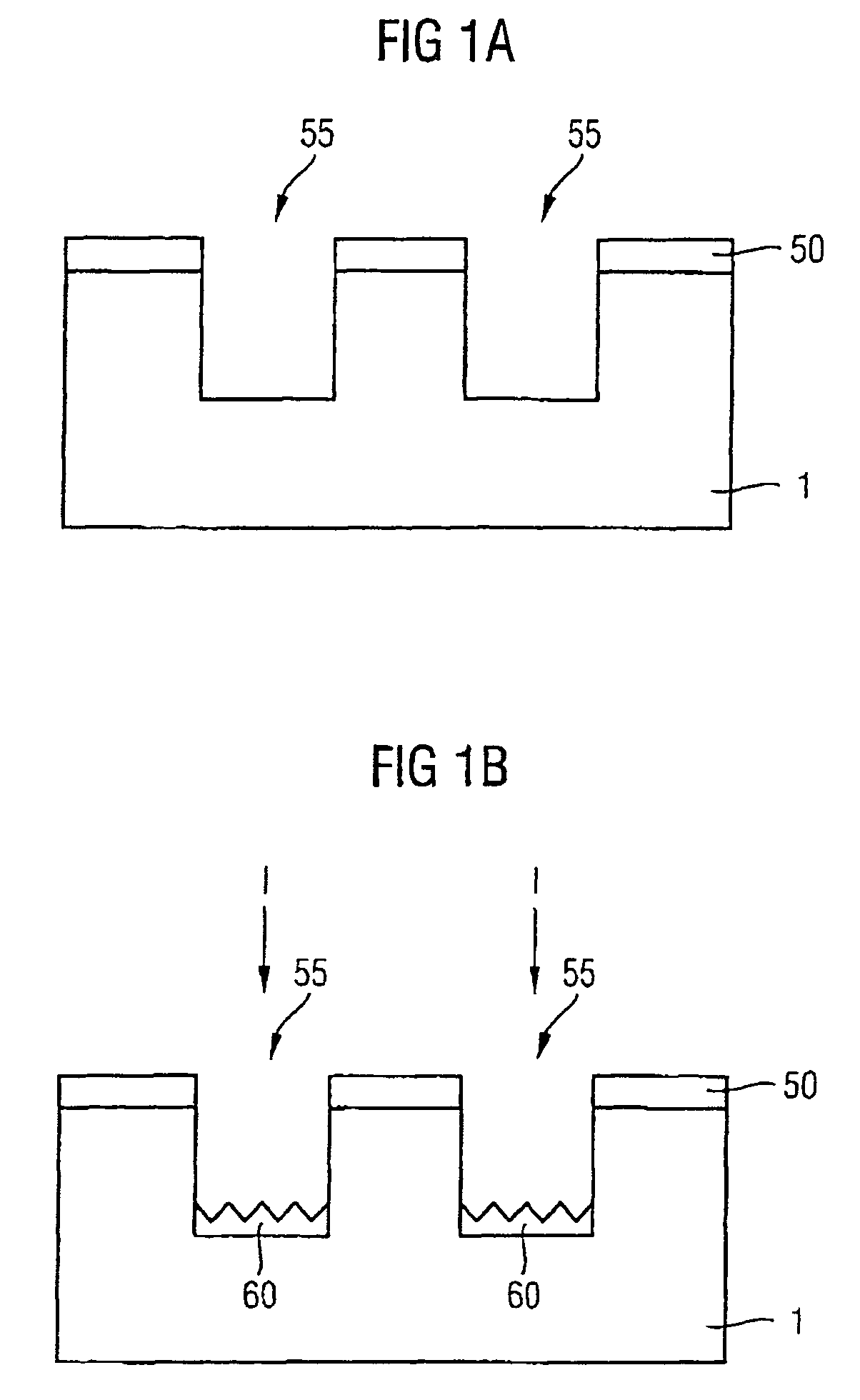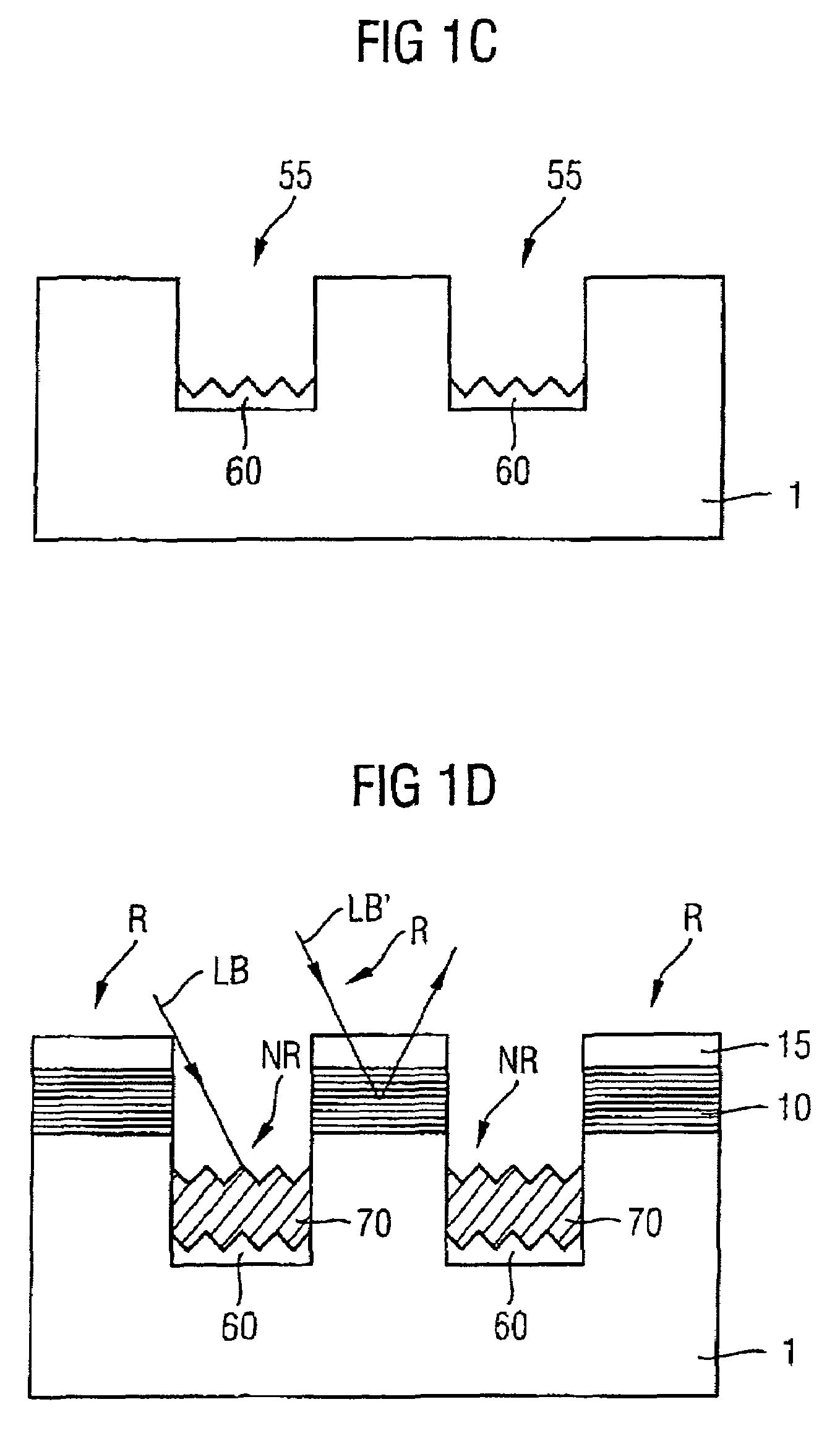Method for fabricating a photomask for an integrated circuit and corresponding photomask
a technology of integrated circuits and photomasks, which is applied in the direction of hose connections, couplings, instruments, etc., can solve the problems of high individual layer defect risk of the entire mask system, minimal distance between the produced structures, etc., and achieve the effect of preventing oxidation of the multi-layer coating
- Summary
- Abstract
- Description
- Claims
- Application Information
AI Technical Summary
Benefits of technology
Problems solved by technology
Method used
Image
Examples
first embodiment
[0041]FIGS. 1a–d show successive fabrication steps for a photomask according to the invention as the present invention.
[0042]In accordance with FIG. 1a, a glass substrate 1 is provided, to which a photoresist mask 50 is applied. By means of the photoresist mask 50, trenches 55 are etched into the glass substrate 1, which define the later non-reflective regions.
[0043]In accordance with FIG. 1b, the glass substrate 1 is then subjected to an ion bombardment I using the photoresist mask 50 in order to form porous regions 60 at the bottoms of the trenches 55.
[0044]As shown in FIG. 1c, the photoresist mask 55 is subsequently removed.
[0045]In the subsequent process step illustrated in FIG. 1d, the multilayer coating 10 is then deposited, to be precise in the present example by alternate sputtering of silicon and molybdenum layers having a thickness of 6.9 nm corresponding to a light wavelength of 13.4 nm.
[0046]Finally, a covering layer 15 e.g. made of silicon having a thickness of 11 nm is...
second embodiment
[0049]FIGS. 2a,b show successive fabrication steps for a photomask according to the invention as the present invention.
[0050]In the second embodiment, use is made of a double substrate 1a, 1b the lower part 1a of which comprises glass and the upper part 1b of which comprises silicon.
[0051]During the trench etching, the upper part 1b made of silicon is not etched through completely, rather a residual thickness d is left in the trenches 55.
[0052]This residual thickness region from the upper part 1b made of silicon is then made porous in an anodic etching process and thus becomes the prepatterned surface region 60′ on which the later multilayer growth is disturbed. A sidewall passivation layer may be deposited beforehand, if appropriate.
[0053]The remaining process steps then proceed in the manner described in the case of the first embodiment above.
[0054]Although the present invention has been described above on the basis of preferred exemplary embodiments, it is not restricted thereto,...
PUM
 Login to View More
Login to View More Abstract
Description
Claims
Application Information
 Login to View More
Login to View More - R&D
- Intellectual Property
- Life Sciences
- Materials
- Tech Scout
- Unparalleled Data Quality
- Higher Quality Content
- 60% Fewer Hallucinations
Browse by: Latest US Patents, China's latest patents, Technical Efficacy Thesaurus, Application Domain, Technology Topic, Popular Technical Reports.
© 2025 PatSnap. All rights reserved.Legal|Privacy policy|Modern Slavery Act Transparency Statement|Sitemap|About US| Contact US: help@patsnap.com



